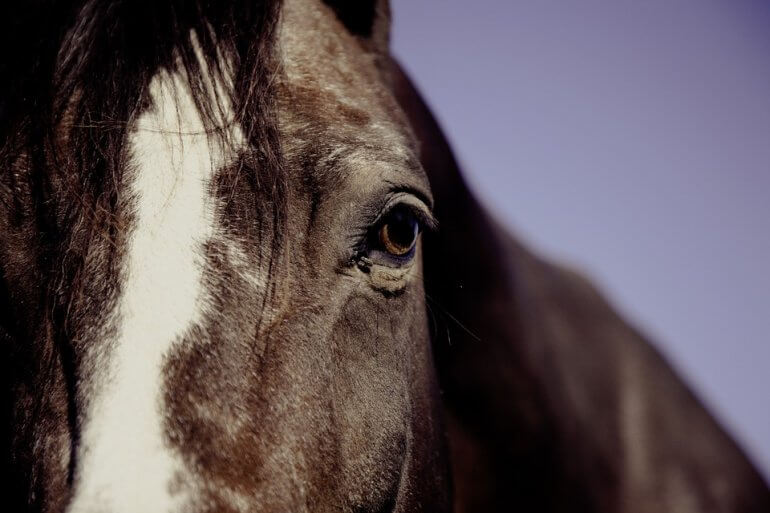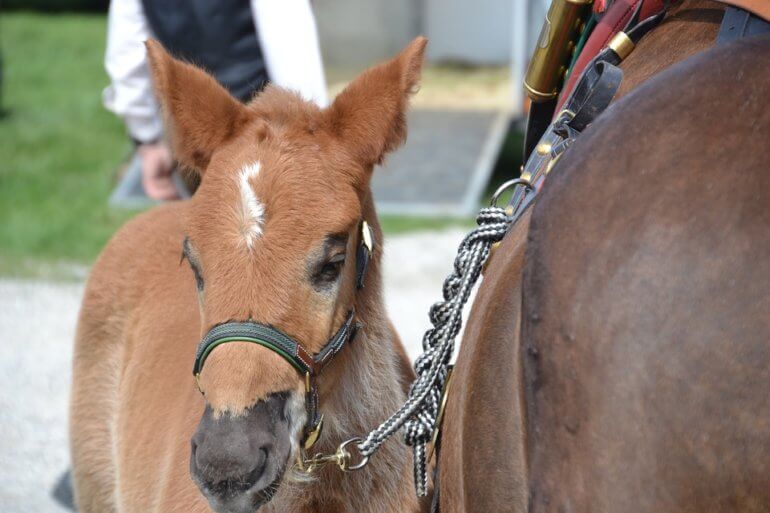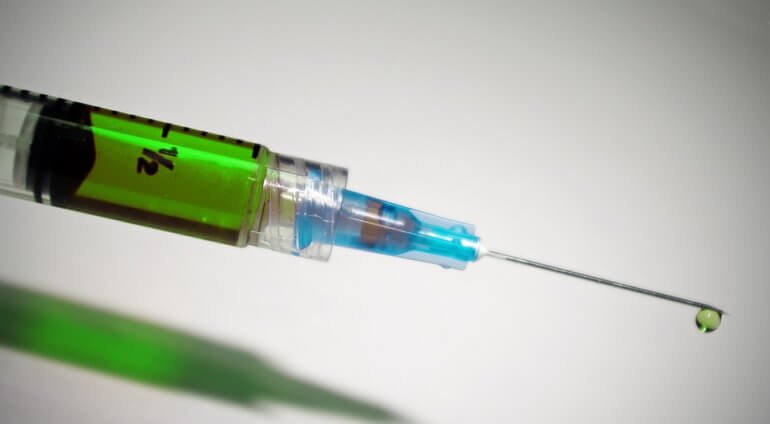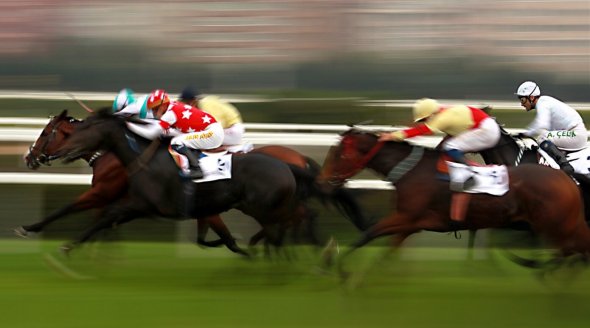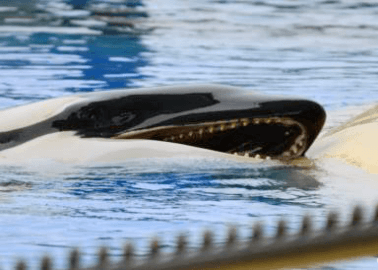How Racing Hurts Horses
Behind the romanticised facade of horse racing is a world of injuries, drugging, gruesome breakdowns, and slaughter.
While spectators wear their fanciest hats and sip champagne, horses are running for their lives. We’ve laid out the step-by-step process that takes place before, during, and after races.
Since the industry lusts after Thoroughbred horses, the individuals who are forced to partake in the cruel spectacle are bred to do so. That means their future – their pain, their suffering, and their eventual death – is laid out for them from the day they’re born.
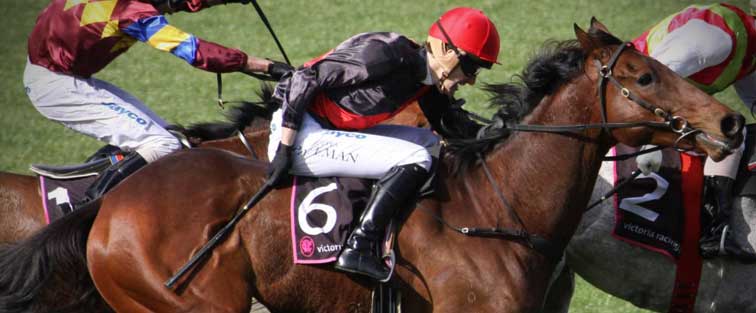
Breeding Machines
The breeding season lasts six months, during which stallions may “cover” three mares a day. Because the breeders want to avoid injuries that may affect their moneymaking scheme, the stallions used in breeding facilities are kept completely isolated from everyone else. Many spend lonely lives in stables or languish behind high fences for 20 years or more.
The mares used for breeding don’t have it any easier. They give birth to a foal every year – even though they would normally only have one baby every two years in their natural environment – and may be given drugs to speed up the birthing process.
Bred for Speed, Not Health
Foals are bred for speed at the expense of their general well-being, so these horses are increasingly less robust and then pushed far beyond their natural abilities in races. It’s common for horses used in races to develop debilitating medical conditions, including bleeding lungs, ringbone, and gastric ulcers.
Of the 12,000 foals born every year into the British and Irish racing industry, only about 40% actually go on to be used in racing. The rest face an uncertain fate and are often slaughtered or neglected.
The horses deemed useful for racing are exploited by the industry once they turn 2 years old. Their future is then in the hands of the very individuals hungry to turn a profit from their misery.
Heart Attacks and Broken Limbs
According to one report, “around 200 horses die on British racecourses every year, and an unknown number are killed in training or because they fail to make the grade”. Thirty-eight per cent of these deaths occur on the racetrack or right after a race – caused by heart attacks, burst blood vessels, spinal injuries, or broken legs.
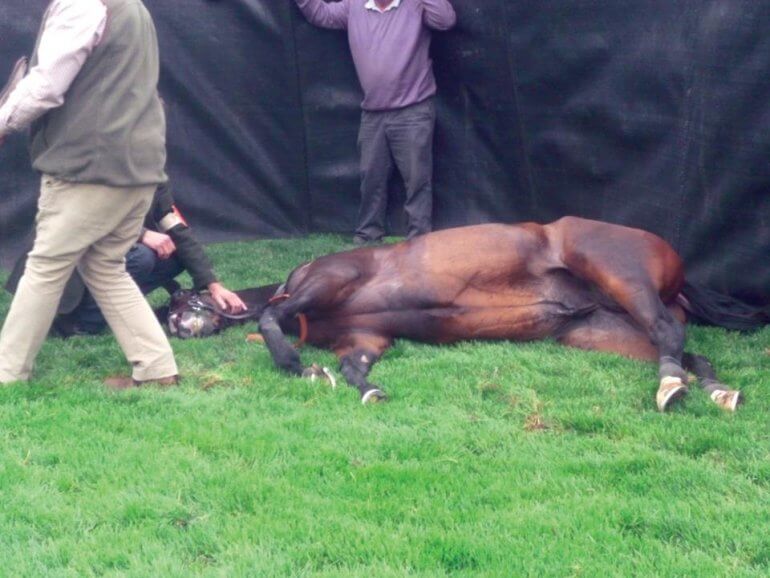
Whipped and Drugged
Racing is also the only context in which it’s still legal to whip animals in this country. A 2018 YouGov poll found that 83% of respondents opposed the whipping of racehorses.
Drugs, both legal and illegal, can be as ubiquitous in racing as flashy hats are at Ascot. Horses may be drugged to mask the pain of existing injuries and conditions, keeping them running when they should be resting or receiving treatment. And illegal drugs are sometimes used to try to make them run faster. For example, Mahmood Al Zarooni – a trainer with one of the world’s biggest horse racing operations – was banned from racing for eight years for doping horses with prohibited steroids.
Retired to the Abattoir
For the horses who do survive the industry’s relentless abuse, there is often no happily ever after. Horses are valued only when they are bringing in winnings, so the racing industry rarely has a proper plan for these animals once they stop making money.
Some will be shot, and many will be slaughtered for their flesh. A PETA US investigation into South Korea’s largest horse abattoir documented that many horses used for racing are “retired” and slaughtered for their flesh before they turn 4.
One of those horses was Googlette, an 11-year-old filly, who was killed at the abattoir in late 2019. Born in Ireland, she was raced nine times in the UK.
After being sold at auction and shipped to South Korea while pregnant, she bore five foals for her owner – and the youngest wasn’t yet 9 months old at the time of Googlette’s slaughter. Three of her other foals are already dead, and the other, named Mile Queen, is currently being raced.
Approximately 1,000 horses from the industry are killed in abattoirs in Britain every year and turned into dog food or cheap meat, while others face horrific live-export journeys.
Victims of a multimillion-pound industry, horses suffer horribly. Whether they die in terrifying accidents on the track, are killed because of crippling injuries, or are discarded like used betting slips, these sensitive animals are treated as nothing more than disposable commodities.
What You Can Do to Help Horses
Fortunately, the public is starting to recognise that the opportunity to wear a fancy hat doesn’t justify the cruelty of horse racing, and many people are now turning their backs on the deadly display.
By broadcasting and promoting the Grand National, ITV is complicit in animal abuse and suffering. Please take a stand for horses today and ask ITV Chair Sir Peter Bazalgette not to air this cruel event:

